China Cycling Travelogues
Do you have a China cycling travelogue you would like
to share here?
Contact us for details.
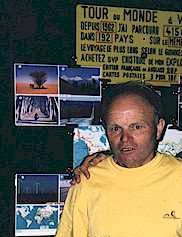
Guinness Book of Records holder
"Epic Journeys"
Around the World by Bicycle - Part 3
Copyright © Heinz Stücke, 2000.
Which places do I remember on this first leg of the journey? Istanbul, a city on two continents where East meets West. It is unforgettable to look from Uskudar on the Asian side over the Bosphorus, when the setting sun silhouettes hundreds of pointed minarets against the sky and the whining sound of the "muhezzin" in the air calling the people to prayer.
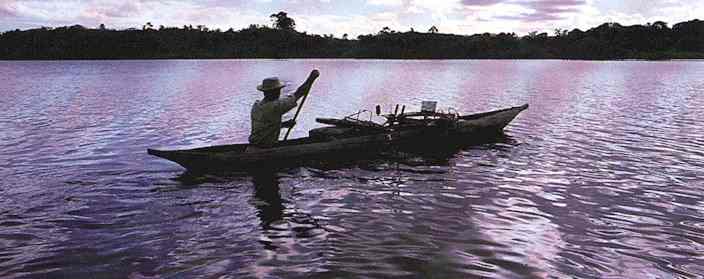
In the high plains of Anatolia in Turkey, I had to fight off huge 'watch dogs of sheep and goatherds who would chase me for many miles. I would pedal furiously to get away and covered good distances in those days. When my turn came I would chase stupid camels in desert stretches. Although they could have escaped in any direction, they would stubbornly run in the middle of the road in front of me for miles and I sure made them run fast, too.
In Jerusalem, when it still belonged to Jordan, I visited the holy places. I entered through Esteban's Gate and followed the 'Via Dolorosa' and I was pushed around and teased by a bunch of youngsters making it a 'Via Dolorosa' for me too. Finally some military police came to my rescue.
In Iran I remember most the washboard dirt roads (now all paved), a typhoid attack and the impressive mosques of Khum, lsfahan, Mashad, Shiraz and Teheran and of course the ruins of Persepolis, capital of the Persian empire 2,500 years ago under Cyrus, Darius, Xerxes etc.
One of the most interesting countries I ever visited is India. It is also one of the poorest, dirtiest and most shocking. People die literally in the streets, passers by just don't care about it. You are sickened by what you see, but you also learn to ignore it after some time. Yet the people of India and their religions, their varied customs, their colourful saris and exotic foods, their life style and temples .... are all so strange and exciting and new, that India ranks very high among all the places that I saw. Supreme beauty is what one encounters in the Taj Mahal at full moon. A pale glow comes from the white building. Like the guidebook says: "It's a dream in marble built by giants and finished by jewellers". One can enjoy India but it is difficult to understand it.
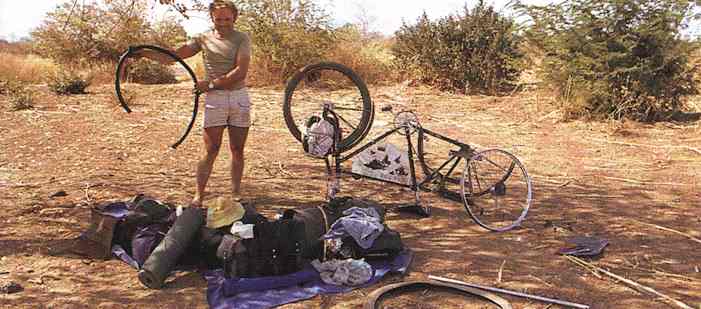
From Colombo, in Sri Lanka I did not know where to go next. I had planned originally to go to South Africa, but could not find a working passage. Eventually I signed on to work on a Norwegian fruit ship. After Singapore we went to Haiphong, North Vietnam. We were to take bananas from there
to Nakodka, Russia. To make a long story short, I managed to get into Russia on the third attempt, I found out later that the man who gave me my permit to enter had no authority to do so. In Siberia, I thought that I couldn't cycle because of political reasons. I had been told that there were "no roads". Supposedly I could cycle in the "European" part of Russia, but then I was taken to Moscow. Finally I was confronted by the official in charge of tourism for the whole of Russia. He said. "Sorry, we have no provisions for tourists who travel by bicycle. You will have to leave the country".
Entering Africa by way of Gibraltar, I was greeted by one of the largest floods Morocco has ever had. On one of the following nights I had to push my bicycle for eight hours through up to 3 ft. of water, desperately trying to keep on the road. I got out of the water alright but everything was soaking.
Many people don't realise that Africa is not overwhelmingly "black". A large part of African territory is Arabic and the same is the case with the population. Even the Ethiopians, although very dark, dislike being classified as
Negro (they are Hamits). The Arab people and the Arab world were not new to me, because I had been there before. Arabs are very prejudiced against the Black; just as much as, for example, the Whites of South Africa.
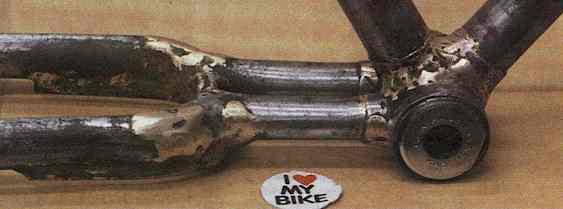
In Sudan, although it is little publicised, there is probably as much apartheid and often more hate between the Arabs in the North and the Blacks in the South than there is in South Africa.
Personally, I found black Africans often disappointing. A good discussion was seldom possible. I often got angry at their giggling and laughing when I cycled past, sweating and having a hard time. In those moments I could have exploded. I am trying not to be prejudiced, but ... well I have a lot to learn. Of course I must not forget their colonial past and considering the way their former masters
lived, it must have been funny after all for them to see a white man on a bicycle.
Because of the big game, the savannas, colourful tribes and Kilimanjaro (almost 5,900 m) the Ruwenzori and Ngorongoro crater: because of the proud, tall Massai and Watusis, the game parks: because of all these things, East-Africa is more exciting than most other parts of Africa. Only a little further south, of course, you have the spectacular Victoria Falls. Other highlights were the pyramids and the ruins of the Pharaohs in Egypt. The Greek and Roman ruins of North Africa were magnificent, too. Ethiopia, with its rugged mountains is not so well known. The Takazze gorge in the Simien is supposedly so large that, according to a guidebook, you could throw the Grand Canyon into it and "hardly notice it". In the Sudan and southern Ethiopia and northern Kenya I encountered some of the worst roads anywhere. Sometimes they were hardly visible, other times destroyed by temporary rivers, many times too sandy to cycle. At times like that, I got off and pushed.
I caught pneumonia in Egypt on the Red Sea in a place where, because of the dry warm air, people are generally sent to "cure lung ailments". I stayed 10 days in my tent without hospital care. A travelling doctor gave me some antibiotics. I ran across a number of other travellers on the dusty roads of Africa. There weren't too many roads to go on.
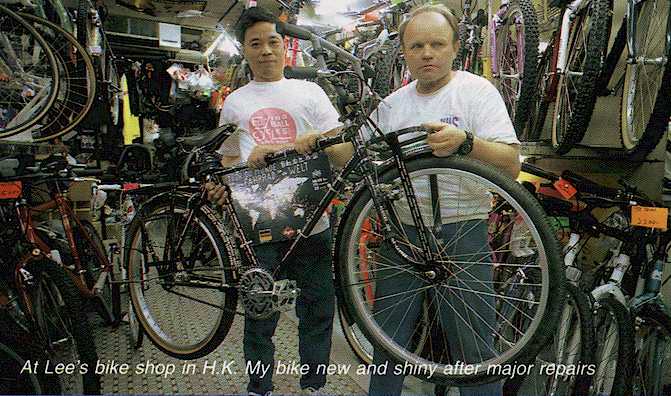
The muddiest water I must have drunk was in southern Ethiopia. To me, however, it tasted like champagne because that was after I had run out of water for almost two days. When I arrived in South Africa, I enjoyed the comforts of a rich, well developed country with good paved roads, large cities and had no difficulties in getting to Cape Town which was my final destination in Africa.
I paid US$228 for my passage to South America. This was from the generous gift of Haile Selassi. Leaving Cape Town, was leaving one of the great beautiful cities of the world behind. But Rio de Janeiro is even more beautiful and it was waiting for me.
If someone, during my first few weeks in Latin America in April and May of 1964, had told me that I was going to stay more than four years I would have replied "Impossible!!" But during that time I slowed down more and more (for the reasons I pointed out earlier). Also, I found the Latin Americans very friendly, generous and easy to get to know. They would open their arms and houses quickly for a young adventurer. Deportista y Aventurero sounds good in Spanish. They are so spontaneous if sometimes not to eager to keep their promises. As long as you don't expect them to do what they say they are going to do, you can have a wonderful time. They don't use much logic. They act according to their feelings at any given moment. Therefore they can be very unpredictable and contradictory. They put a lot of emphasis on living and playing first; work comes later. Perhaps for that reason they seem to worry less. They are very capable and have a lot of potential but little "stick-to-it willingness". In my opinion, that is one of the reasons why Latin America is still called "a developing continent". But why should we try to make them like us. Go and accept their way of life. I became a Latin American in many ways during my stay.
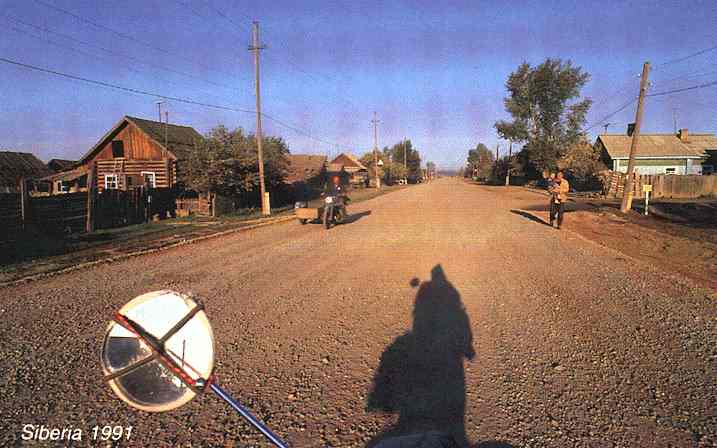
I visited every country and most regions of South America. In general the roads were better than in Africa, but more mountainous. I crossed the Andes on several occasions. Between Lima and La Oroya I pushed the bike over the Ticlio Pass which at 4,843 meters was my highest point on the bike for many years.
In Patagonia, strong constant west winds would push or break me depending on the turn of the road. Among the great sights of nature I enjoyed the lguazu Falls (on the border of Brazil, Argentina and Paraguay) and the Angel Falls in Venezuela which are the highest of all falls at just under 1,000 meters. My personal favourite waterfall in the world is the splendid Kaiteur Falls (old man's falls) at 225 meters in Guyana (derived its name from the Indian custom of putting an old man into his canoe for his last ride down the river.) The round trip from Georgetown took me ten days, because the falls were remotely located in jungle regions.
Some other impressive places were the Inca ruins of Cusco and Machu-Pichu in Peru. I also enjoyed the ruins of the Mayas, Aztecs, Olmecs and Toltecs in Guatemala and Mexico. Spectacular mountain scenery was offered all along the Andean chain with enormous glaciers in the south. Different and exciting were the chains of active volcanos in Central America. It was a very exciting day when I stood at the foot of the Pacaya Volcano in Guatemala when it was in full eruption. I liked the colourful Indian customs of Guatemala, Bolivia, Peru and Ecuador the best because of their originality and their photogenic quality.
Most adventurous of all were the many trips and expeditions I made into the jungle regions. Since there were no roads, I usually had to leave the bicycle behind. On foot, by canoe, raft and larger boats, I covered great parts of the Amazon jungle. Since I was a boy I had wanted to see the mightiest of all rivers, where even minor tributaries are larger than anything comparable in Europe. The ultimate in adventure is to be completely on your own, when life itself depends on your abilities and decisions. I felt a little like Livingstone or Stanley must have felt when they explored Africa a hundred years ago.
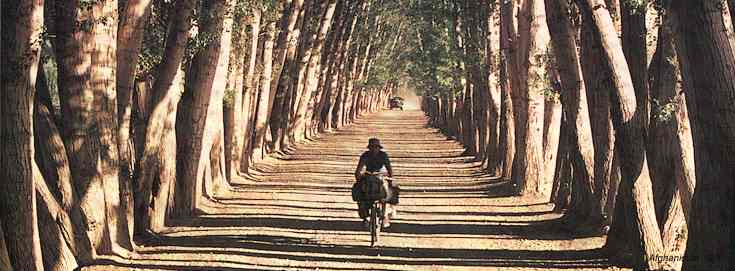
But the jungle was also a hard place to live in; hot, humid and often boring. One encounters fewer animals than one might think. In most people's imagination, the jungle is a place where animals lurk behind every tree. They think of jaguars prowling, snakes slithering and monkeys playing. They dream of insects buzzing and sound everywhere. In reality everything is a greenish haze. It is impossible to really see or distinguish anything, unless perhaps an Indian tells you exactly where to look. Go and look for animals. Go and try to find a snake for yourself. You will be disappointed. You get tired. You give up. Then, suddenly some noise, something breaks away and you are lucky to have seen what it was. You must be very lucky to get a glimpse at, say, a tapir or a jaguar. I never saw a live jaguar in the jungles and I spent plenty of time there. I don't know just why I was so attracted to the jungle in the end. But I was glad to get out again, to get back to comfort to see civilisation once more.
North America may not have the Amazon and jungle, but when it comes to spectacular sights of nature the United States can't be topped I think, anywhere in the world. A great number of the most unusual monuments of nature are dotted all over the country from coast to coast. Be it the immense and colourful Grand Canyon or the giant Redwoods and Sequoia trees in California. Or the equally giant sky scrapers of nature in Monument Valley and the thousands of intricate red, pink and yellow pinacles of Bryce Canyon. There is the Petrified Forest, fantastic Zion Canyon and Yosemite National Park and Niagara Falls, Everywhere you will be standing gaping and not believing nature's creations.
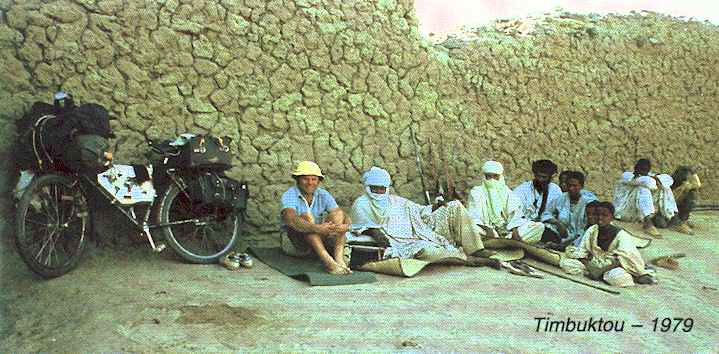
However, after six years in the two Americas I finally became eager to set off for another part of the world. The final bit of excitement came in San Francisco, when my bicycle disappeared but through the extensive pleas which were broadcast over TV and radio and through the assistance of the citizens there, my bicycle was luckily recovered after only 4 days. By the way the bicycle was stolen on three other occasions, in Columbia, Turkey and the Philippines, in Tibet it was confiscated by the authorities but it was eventually returned. I must consider myself very lucky indeed to have it recovered each time. As time passes I do begin to have a special relationship with it and I would not know what to do, should I lose it now.
My plan to stop in Hawaii for an unknown time also served as a stepping stone across the Pacific. Despite the many tourists I enjoyed the group of islands very much thanks to the many good friends I made there. Most exciting were the live volcanos on the big island and the climb up Mauna Loa (over 4000 metres) passing up through its incredible desolate volcanic landscape. Also a new experience was flying to the many islands of Micronesia on the way to Okinawa. Having fortunately made the acquaintance of an Air-Micronesia pilot, my bicycle was transported free of charge. In Japan, I found financial success and considerable publicity. Conditions in general were a little crowded for me in most places, but the kindness of the people, their honesty and their willingness to help came as a pleasant surprise. Often people think of the Japanese as being impenetrable and mysterious. I found them to display great openness, always ready to laugh, an almost childlike enthusiasm and readiness to do anything you suggest. To climb a mountain, to do a tour, to play a game. They constantly gave little (and big) presents and souvenirs. The only big drawback in Japan is conversation with people. A different way of thinking accounts for many, unintended misunderstandings. Not that conversations are very complicated. In fact they talk generally about less important things, because Japanese people must keep problems to themselves. To get along well in overpopulated areas this is a necessity, but on the other hand tension may not find an outlet. Sometimes the outlet is the accelerator of the car. Westernisation is obvious in Japan but only on the surface. Much of the Japanese life and culture is traditional and indigenous. Western things get a Japanese imprint very quickly. Japanese people are probably the most homogeneous people in the world. To understand one of them is to understand most of them.
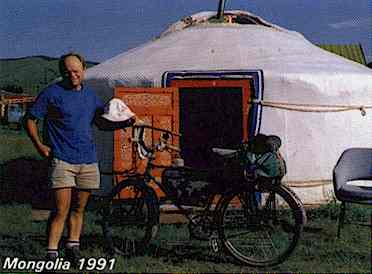
Leaving Japan in November, 1972 with a pocketful of money and many good memories I thought I would be able to make my way back to Germany in a year or two with no more money problems. It's interesting to note how many times I said I'd go home and how many times I was wrong. I started this "going home business" back in the sixties. First I was to be there in 1968 then 1970. "Well", I said, "I'm sure that I'll be home for the 1972 Olympics". Then it was for the Football World Cup of 1974. Finally, 1975 was to be the year when I returned. After that when people asked "When do you intend to go home", I shrugged my shoulders and said "I'm not sure, maybe next year or the year after," or I said "I've got to break Marco Polo's record!" What's his record? Well, he stayed away for 25 years. Now my answer is: "I will go home when I run out of new countries."
Skip to: Heinz Stücke Page 1 | Heinz Stücke - Page 2 | Heinz Stücke - Page 3 | Heinz Stücke - Page 4 | Heinz Stücke - Page 5
Help keep Heinz Stucke rolling!
Make a donation here to his PayPal account!
Bike China Adventures, Inc.
Home | Guided Bike Tours | Testimonials |
| Photos | Bicycle Travelogues
| Products | Info |
Contact Us
Copyright © Bike China Adventures, Inc., 1998-2012. All rights reserved.
